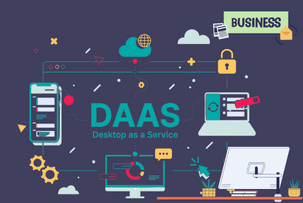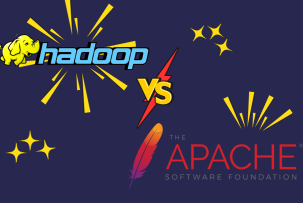5 easy CSS frameworks for creating a Landing Page
13:23, 29.11.2022
The rapid development of the IT sphere around the world leads to the fact that every legal company or enterprise, regardless of the specifics of their activities, needs representation on the Internet. Development of Landing Pages, business card sites, promo sites, online stores, information sites, and online services – all this stimulates the development of web development tools. In this article, we will break down 5 easy CSS frameworks for creating a Landing Page, as well as tell you what they are needed for.
What is a CSS framework
CSS is a cascading style sheet. This is a tool that can be used to modify the appearance of any site, determine the size of individual elements, their color, set indents, etc. Using CSS frameworks is advantageous because they greatly simplify the work of the caster, speed up development and allow you to easily achieve cross-browser support. In some cases, there are full-fledged visual editors that allow you to evaluate the visual component of the future site at the design stage.
Let's move on to consideration of the 5 best CSS frameworks for creating a landing page.
Bootstrap
A completely free HTML, CSS, and JS open-source framework optimized for fast adaptive website design. It is most often used in front-end development. Bootstrap integrates HTML and CSS templates that can be used to design web forms, buttons, labels, navigation blocks, and other web interface elements.
The advantages and disadvantages of Bootstrap
- The ability to automatically build an adaptive grid based on the Flex model. It can be changed in every way to suit the individual needs of the customer.
- Adaptation of images depending on the size of the user's screen. The developer simply adds the .img-responsive class to the images,
- Cross-browser capability. Websites developed using this framework will display equally correctly on any device, regardless of screen diagonal, aspect ratio, or operating system type.
- Simple and clear code – simplifies development and reduces optimization time.
- Detailed documentation – each fragment of the framework is described in detail, all of its functions and features. You can find the documentation on the official website of the developers.
The disadvantages are the mediocre flexibility and lack of full support for older browsers, which can cause them to display pages incorrectly.
Tailwind
A unique framework of its kind, which formed a new paradigm of web styling. For this reason, it is called the "Bootstrap of the future". Tailwind has a wide range of classes, tools, and out-of-the-box components that make working with HTML styling easy.
Advantages and disadvantages of Tailwind
- You don't need to waste time coming up with CSS class names – it's all done here and ready to use.
- It contains ready-made classes, utilities, and directives for HTML styling and markup, which allows you to implement fully customizable designs without writing even a line of handwritten code.
- Easy and straightforward customization – color palette, styles, themes and more can be customized through the configuration file tailwind.config.js.
- Integration with PurgeCSS. You can use it to optimize the framework by getting rid of unnecessary, unused classes.
- The adaptability of layouts – especially for mobile devices.
But it's not without its minuses, either. An overabundance of classes, on the one hand, expands the potential of developers. On the other hand, it overloads the interface and creates additional complexity, which is why many developers optimize the CSS framework with PurgeCSS.
Spectre
A very light and completely free framework without JS dependencies. It was originally written in Less, but now it uses Sass. It is extremely flexible, as all CSS components and utilities can be easily modified to suit your needs using SASS or SCSS.
Advantages and disadvantages of Spectre
Advantages include:
- No JS dependencies.
- Uses the SASS preprocessor.
- Low weight – only 10 Kb.
Spectre support is implemented for most modern web browsers, but there may be issues with adaptive layout when using older browsers.
Bulma
A popular open-source framework built on the flexbox usage model. Each element and component of Bulma is optimized for all existing types of mobile devices, so there are no problems with cross-browser implementation.
Advantages and disadvantages of Bulma
- Lightweight – due to the absence of Javascript code. It's pure CSS, which allows you to practically increase the loading speed of web pages created with it.
- The flexibility of customization – Bulma contains more than 300 SASS variables, which allows you to adapt the design and layout of individual elements to your liking.
- Finished pages created using this CSS framework will be compatible with any JS framework: jQuery, React, Angular, etc. This is an important advantage for a landing page.
- Simple and clear class names.
It is also worth noting the extensive and close-knit community, which will answer any questions on the profile forums and sites if necessary.
Foundation
According to the developers themselves, this is the most advanced and adaptive interface framework. Such statements should often be treated as ordinary marketing, but in this case, we have a really unique product created by ZURB. Foundation was released to the public in 2011 under the MIT license; it has a modular structure and consists mostly of SASS styles.
Foundation's arsenal includes a lot of starter templates to speed up web development, as well as a set of flexible tools that can be used to solve any interface tasks. The implementation of all this is of prohibitively high quality – not for nothing is this framework used by such giants as Adobe, eBay, EA, Amazon, and Mozilla.
Advantages and disadvantages of the Foundation
The advantages include:
- Full control over the development of the user interface.
- A huge range of additional features, from an advanced adaptive image system to ready-to-use price table components.
- A solid UI library makes it easy to work on real prototypes, including Landing Page creation.
- Complete adaptability and abandonment of the obsolete jQuery library in favor of zepto.js.
However, there are also tangible disadvantages. First, Foundation developers often have to figure out the intricacies on their own, since the framework has a relatively small community. Secondly, it is a complex CSS framework, and if you are used to Bootstrap or other similar frameworks, it will be difficult to retrain.


